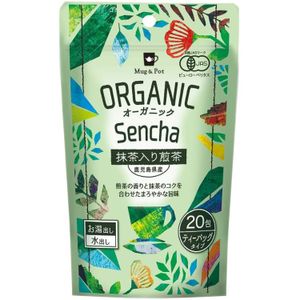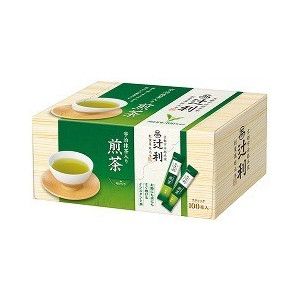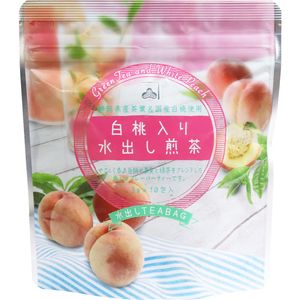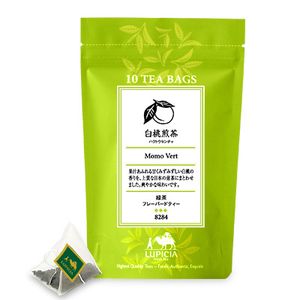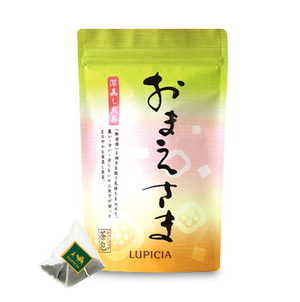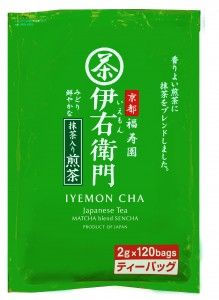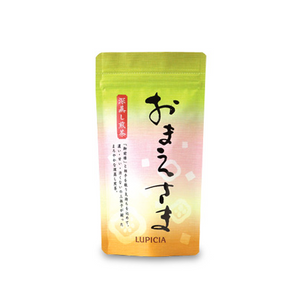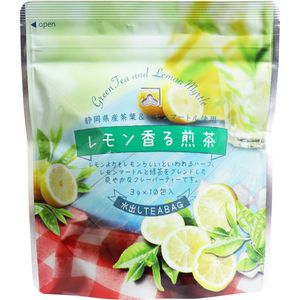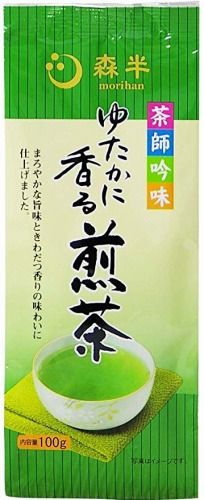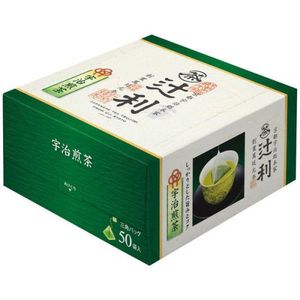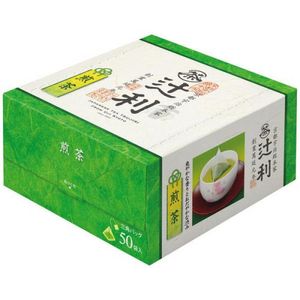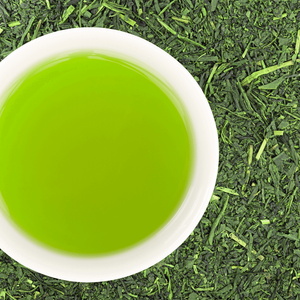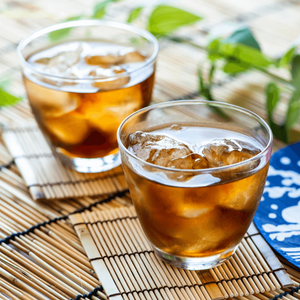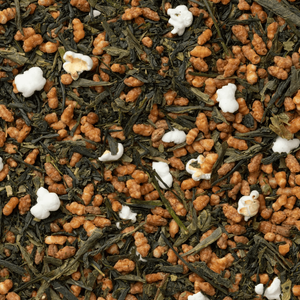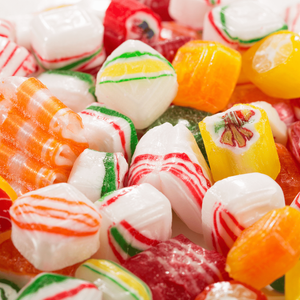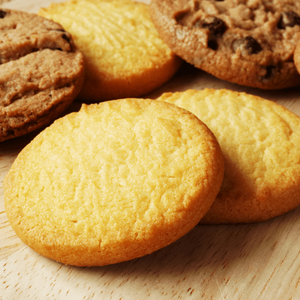Guide to Japanese Sencha
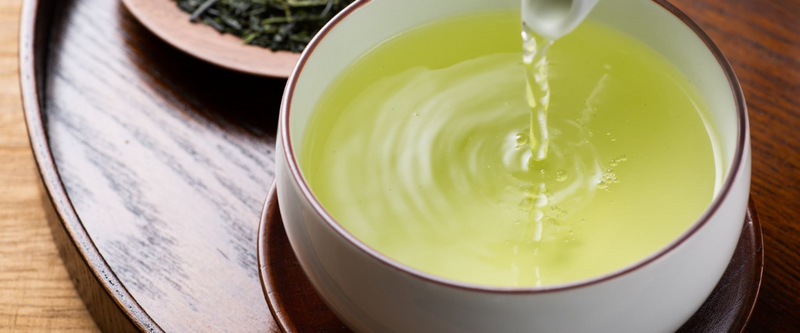
What is Sencha?
Sencha is the most commonly consumed green tea in Japan. It is characterized by a production process where tea leaves are steamed to prevent oxidation and preserve flavor. The tea is brewed using mainly fresh buds and young leaves steeped in hot water. Sencha offers a light sweetness, with a hint of bitterness and astringency, delivering a refreshing and vegetal taste. Its flavor can also reflect citrus or seaweed-like notes, depending on the region and harvest season. Compared to other Japanese teas like Hojicha, Gyokuro, or Matcha, Sencha is more widely enjoyed in households and restaurants as part of daily life. It's rich in antioxidants and catechins, making it beneficial for health. Sencha is especially favored among health-conscious individuals for its immune-boosting, anti-aging, and beauty-enhancing effects.
Health Benefits of Sencha
Sencha is packed with beneficial compounds known for promoting health and wellness. One of the main components, catechins, has powerful antioxidant properties that help prevent cell aging and enhance immune function, aiding in the prevention of colds and flu. EGCG, a type of catechin, supports fat burning, making it effective for weight loss and weight management. While sencha contains caffeine, it’s less than that in other caffeinated drinks, providing a gentle boost in alertness and productivity. Additionally, it contains fluoride, which supports oral health and helps prevent cavities and gum disease. On top of these health advantages, sencha has a relaxing effect, helping to reduce stress. Incorporating sencha into your daily routine can support overall physical and mental well-being.
What is EGCG?
EGCG (Epigallocatechin gallate) is a type of polyphenol catechin, abundant in green tea, known for its strong antioxidant properties. It neutralizes free radicals in the body, potentially reducing cell aging and the risk of cancer. EGCG also promotes fat oxidation and increases energy expenditure, especially when combined with exercise, enhancing weight loss effects. It may support cardiovascular health by helping to lower blood pressure and cholesterol levels. Additionally, EGCG exhibits anti-inflammatory properties and is thought to enhance immune function, making it a potential ally in preventing colds and flu when consumed regularly.
Types of Sencha
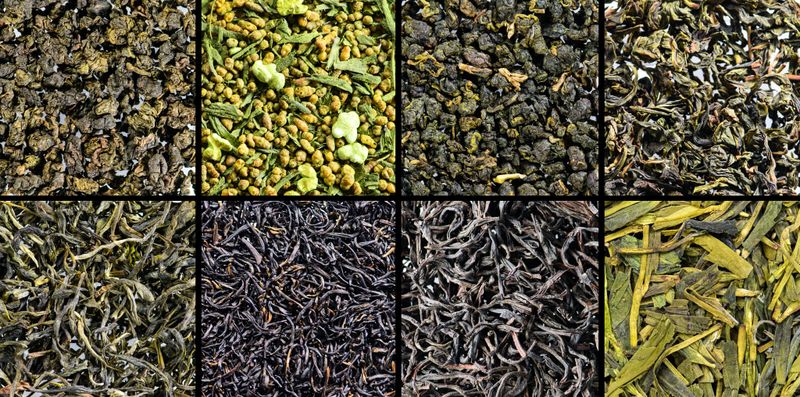
| Type of Sencha | Characteristics | Famous Production Areas |
|---|---|---|
| Regular Steamed Sencha | Standard sencha with a well-balanced flavor, mellow sweetness, and mild astringency. | Shizuoka, Uji |
| Deep Steamed Sencha | Steamed longer than regular sencha. Rich and intense flavor with less bitterness and more sweetness. | Shizuoka, Uji |
| Kabusecha | Made from tea leaves that are shaded before harvesting. Has a rich, sweet flavor. | Shizuoka, Uji |
| Kikuchi Sencha | Grown in the Kikuchi region of Kumamoto. Rich aroma, mellow flavor, and refreshing aftertaste. | Kumamoto (Kikuchi region) |
| Premium Sencha | Made from high-quality tea leaves. Rich flavor and aroma, slightly intense taste. | Shizuoka, Uji |
| Bancha | Made from mature leaves picked later in the season. Mild with low bitterness and astringency. | Mainly Shizuoka, Kyushu |
| Sushi Sencha | Pairs well with sushi. Mild astringency and refreshing after-meal taste. | Shizuoka, Uji |
| Shincha | The first harvest of the season made with young spring leaves. Very fresh and aromatic. | Mainly Shizuoka |
\Check the Latest Prices/
Browse All Sencha Products
Differences in Flavor, Aroma, and Characteristics by Region

| Region | Flavor | Aroma | Characteristics |
|---|---|---|---|
| Shizuoka | Mild and well-balanced with a slight sweetness. | Refreshing grassy notes with a touch of seaweed. | Japan’s most iconic tea-producing region. Consistently pleasant for all tastes. |
| Uji | Rich and deep flavor, a perfect balance of sweetness and astringency. | Sweet and floral aroma. | Historic tea region. Known for premium sencha with deep flavor and high aroma. |
| Kagoshima | Refreshing, light flavor with a smooth mouthfeel. | Clean, grassy scent with a light aroma. | Excellent climate and soil. Popular among health-conscious tea lovers. |
| Fukuoka | Slightly stronger bitterness and astringency, but clean finish. | Deep grassy aroma with a hint of sharpness. | Offers a slightly bitter profile with a crisp aftertaste. |
| Kikuchi | Fragrant, sweet, and umami-rich. Slightly bold flavor. | Sweet, floral aroma with rich umami notes. | Known for luxurious sencha rich in sweetness and umami. |
| Kaga | Delicate and light flavor with mild sweetness and smoothness. | Elegant, floral aroma with a graceful lightness. | Produces refined and elegant sencha, excelling in green tea flavor. |
How to Brew Sencha
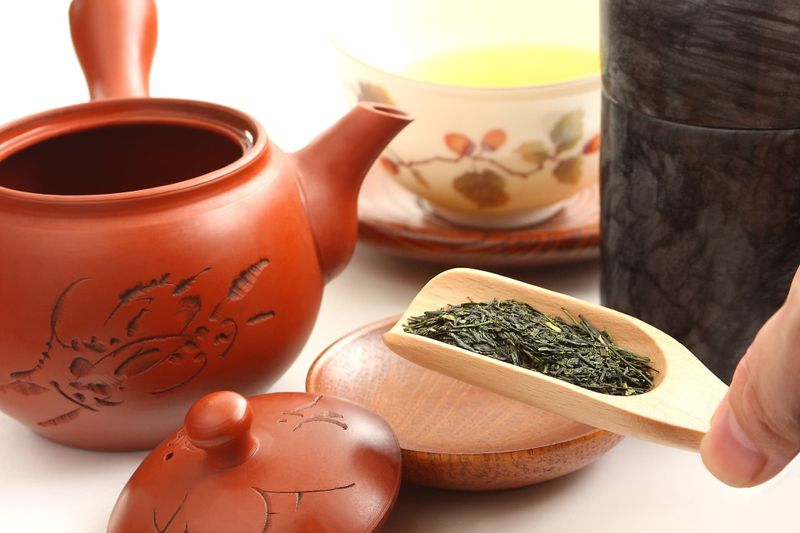
Step 1: Prepare the Tea Leaves
Amount: For one cup (about 150ml), use approximately 1–2 grams of sencha tea leaves. Adjust the amount based on your taste preference.
Step 2: Prepare the Water
Ideal Temperature: The best water temperature for sencha is between 70–80°C (158–176°F). Using boiling water can cause bitterness, so let it cool slightly first.
How-to: Boil water and let it cool to the ideal temperature. A thermometer can help you get it just right.
Step 3: Warm the Teaware
Preheating the teapot: Pour hot water into your teapot to warm it before brewing. This helps the leaves open more evenly and enhances the flavor.
Step 4: Add the Tea Leaves to the Teapot
Place the tea leaves into the warmed teapot. Use 1–2 grams per 150ml cup. Make sure there’s enough space for the leaves to expand.
Step 5: Pour the Hot Water
Pour the water slowly and evenly over the tea leaves. This helps ensure even extraction.
Step 6: Let the Tea Steep
Steeping Time: Let it steep for 1 to 1.5 minutes. Shorter steeping results in a lighter taste, while longer steeping can increase bitterness and astringency. Adjust based on preference.
Step 7: Pour the Tea
Tilt the teapot slightly and pour the tea into small cups. Make sure to pour out all the liquid to avoid over-extraction.
Step 8: Second and Third Infusions
Sencha can be enjoyed through multiple infusions. For the second brew, use slightly hotter water (80–85°C) and a shorter steeping time (around 30 seconds). The third brew can be around 1 minute.
How to Choose Sencha
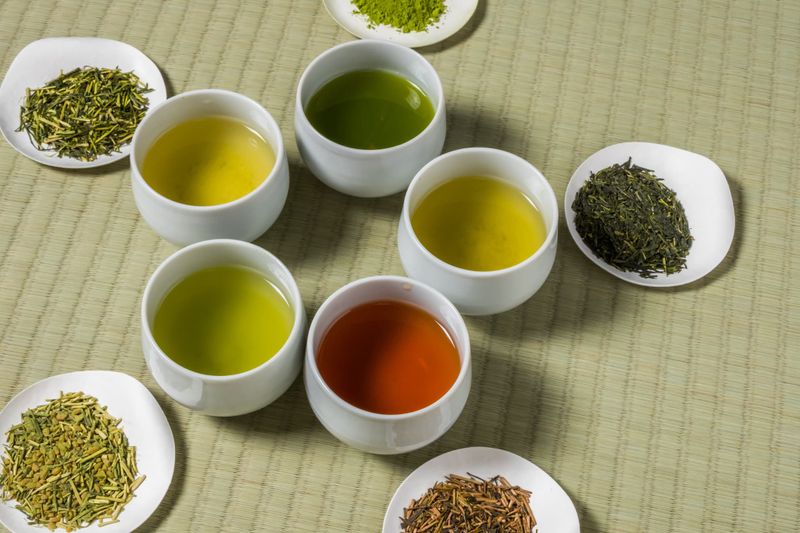
1. Check the Quality of the Tea Leaves
- Leaf Color: Fresh sencha has vibrant green leaves. The brighter the color, the fresher and higher the quality. Dark or dull leaves may be old or degraded.
- Shape: High-quality sencha has evenly shaped leaves. Avoid leaves that are too crushed or powdery, as they may indicate lower quality.
2. Choose by Region
- Shizuoka: Japan’s most famous tea-producing region with a well-balanced flavor profile.
- Uji: A historic tea-growing area in Kyoto, known for deep, flavorful sencha with rich aroma.
- Other Regions: Areas like Kaga, Kikuchi, and Kagoshima have distinctive regional flavors. Try different origins to find what suits your taste.
3. Understand the Processing Method
- Regular Steamed Sencha: Standard method producing a balanced flavor. Ideal for sencha beginners.
- Deep Steamed Sencha: Longer steaming time results in less bitterness and more sweetness. Perfect for those who enjoy a rich flavor.
- Kabusecha: Made from shaded tea leaves, offering intense sweetness and umami. Great for fans of matcha-like flavor.
4. Pay Attention to Aroma
- Fresh, Grassy Scent: Good-quality sencha has a strong fresh-cut grass or seaweed aroma when you open the package.
- Aroma Variations: Aroma varies depending on region and processing. Uji sencha tends to be highly fragrant, while Shizuoka’s is lighter and refreshing.
5. Match to Your Preference
- Bitterness vs. Sweetness: Choose deep steamed sencha for mellow sweetness, or regular steamed for a crisp, refreshing finish.
- Aftertaste: Consider the lingering taste. Sencha with a clean, refreshing aftertaste pairs well with meals.
6. Check the Packaging and Storage Info
- Storage: Tea is sensitive to moisture and light. Look for airtight packaging and store it in a cool, dark place after opening.
- Expiration Date: Always check for freshness. Avoid products nearing expiration.
7. Consider Price Range
- Premium Sencha: Made from top-grade leaves. Higher in price, but rich in aroma and flavor—ideal for gifts or special occasions.
- Everyday Sencha: Affordable and reliable. Great for daily drinking.
\Check the Latest Prices/
Browse All Sencha Products
Recipes Using Sencha
1. Sencha Cookies
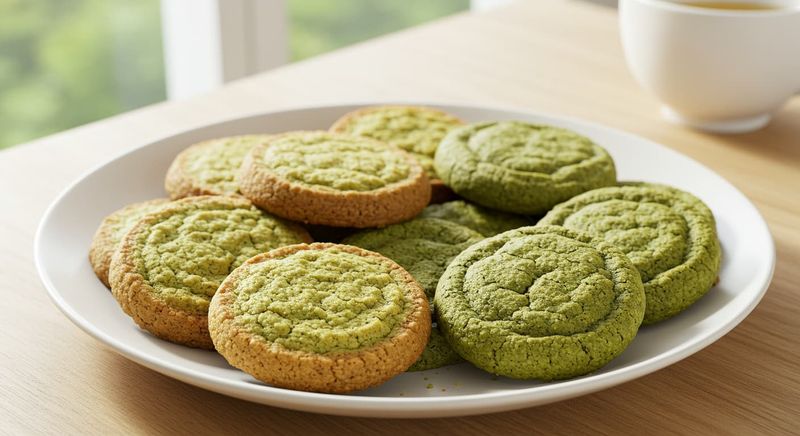
Ingredients:
- Flour: 200g
- Unsalted butter: 100g
- Sugar: 80g
- Sencha tea leaves: 2–3g (finely ground)
- 1 egg
- A few drops of vanilla essence
Instructions:
- Prepare the tea leaves: Finely grind the sencha leaves using a mill or grinder.
- Cream the butter and sugar: Soften the butter at room temperature in a bowl, then add sugar and mix until creamy.
- Add the egg: Mix in the egg thoroughly, then add the vanilla essence.
- Add dry ingredients: Sift the flour and ground sencha together, then mix them into the butter mixture.
- Form the dough: Wrap the dough in plastic wrap and chill in the fridge for about 30 minutes.
- Shape and bake: Shape the dough as desired and bake in a preheated oven at 180°C (356°F) for 10–12 minutes. Cool after baking.
2. Sencha Cheesecake

Ingredients:
- Cream cheese: 200g
- Heavy cream: 100ml
- Sugar: 100g
- Sencha tea leaves: 3g (finely ground)
- 2 eggs
- Biscuits for crust: 100g
- Unsalted butter: 50g
Instructions:
- Make the crust: Crush the biscuits and mix with melted butter. Press the mixture into a mold and refrigerate for about 30 minutes.
- Make the filling: Soften the cream cheese and mix with sugar. Add eggs one at a time, then add heavy cream and mix well.
- Add sencha: Stir in the finely ground sencha tea leaves.
- Bake: Pour the filling onto the crust and bake at 160°C (320°F) for about 50 minutes. Let cool and refrigerate for several hours.
- Finish: Remove from the mold and plate the cheesecake before serving.
Frequently Asked Questions About Brewing Sencha
1. What is the ideal water temperature for brewing sencha?
The optimal temperature is between 70–80°C (158–176°F). Using water that's too hot can bring out excessive bitterness, while water that’s too cool won’t fully extract the flavor. Let boiling water cool a bit before brewing for the best taste.
2. How much tea leaves should I use?
Generally, use about 1–2 grams of tea leaves per 150ml cup. You can adjust the amount depending on how strong or light you prefer your tea.
3. What is the proper steeping time for sencha?
The ideal steeping time is 1 to 1.5 minutes. Over-steeping can make the tea too bitter or astringent. For second and third infusions, shorten the steeping time and slightly increase the water temperature.
4. Can sencha be brewed multiple times?
Yes, sencha can be enjoyed over multiple infusions. The second and third brews each offer a slightly different flavor. For the second brew, steep for about 30 seconds; for the third, around 1 minute.
5. What is the best way to store sencha leaves?
Store sencha in an airtight container in a cool, dark place, away from moisture and direct sunlight. High heat and humidity can degrade the quality of the tea leaves.
6. What kind of teapot is best for brewing sencha?
A wide-mouth teapot with a shallow base is ideal, as it allows the tea leaves to fully expand. The material of the teapot also matters—ceramic, porcelain, or iron teapots can each enhance different aspects of the flavor.
7. What should I watch out for when brewing sencha?
Pay attention to water temperature and steeping time. Too hot or too long can make the tea too bitter, while too cool or too short will under-extract the flavor. Aim for around 1 minute at 70–80°C.
8. What should I do if the tea tastes too weak?
Try using more tea leaves, slightly extending the steeping time, or increasing the water temperature. Weak flavor may also indicate stale leaves—consider switching to fresher tea.
9. How can I reduce bitterness in sencha?
To reduce bitterness, shorten the steeping time, lower the water temperature, or use slightly fewer tea leaves. Deep-steamed sencha also tends to have a naturally sweeter flavor.
10. How can I make iced sencha?
To make iced sencha, brew it stronger than usual using about 1.5 times the normal amount of tea leaves. Steep for about 1 minute at 70–80°C, then pour over ice to chill. Brewing strong ensures the flavor isn’t diluted by the ice.
